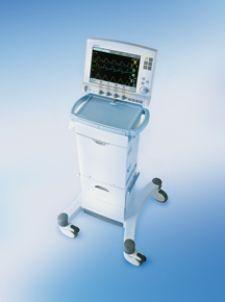
Maquet Critical Care's SERVO-i ventilator with NAVA (Neurally Adjusted Ventilatory Assist) is a new approach to mechanical ventilation which allows the patient to control the ventilator with his/her respiratory center. NAVA represents a paradigm shift in the area of ventilation therapy.
The NAVA approach to mechanical ventilation is based on the patient's neural respiratory output. Signals from respiratory control center in the brain are transmitted through the phrenic nerve to the diaphragm, where a catheter captures the electrical activity (Edi) and feeds it to the ventilator. The ventilator responds by providing the requested level of support to the patient. As the ventilator and diaphragm work with the same signal, the coupling between the two is virtually instantaneous.
Conventional mechanical ventilators sense patient effort by either a drop in airway pressure or a reversal in flow, the last and slowest reacting step in the chain of respiratory events. NAVA, on the other hand, senses the electrical activity of the diaphragm, which is the earliest respiratory signal that can be detected.
